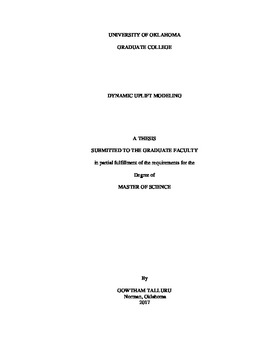| dc.description.abstract | In this thesis, a new approach to Uplift modeling which considers time dependent behavior of the customers is analyzed. Uplift modeling attempts to measure the impact of a treatment on an entity in a controlled experiment. While the overall incremental effect can be measured indirectly (i.e., the average performance of a treatment group over a statistically equivalent control group), the entity-specific performance cannot be determined. It has applications in business, insurance, banking, personalized medicine, and other fields. Direct marketing, a multi-billion dollar field in the US alone, is a key area in which uplift modeling is studied and can have a significant financial impact. In direct marketing, the entities studied are customers and the treatments are various direct-to-consumer promotions delivered through mail, email, social media, etc. Simulated customer and campaign datasets which reflects the naturally observed trends are used to analyze the effectiveness of various modelling approaches.
Research on Uplift modeling specific to above mentioned fields started in the beginning of 21st century even though the idea of Uplift is present before that. Researchers have introduced a wide range of uplift modeling approaches. These approaches broadly include two model approach, additive model approach and unified modeling approach. But all of the research until now has considered this as a static problem, modeled at a single instance of time.
The method introduced in this work considers modeling uplift in a dynamic environment and simulates the periodic purchasing behavior of the customer. In contrast to static uplift models, the uplift in the purchase probability of the customers considered in this problem is dependent on time as well as customer’s previous purchases and offers received. In addition, the model will not have direct access to all the parameters effecting customer actions, but it has to learn them with time. The effectiveness of various modeling approaches, two model approach, additive model approach and unified modeling approach is analyzed in this work for dynamic uplift modeling. Appropriate modifications are made to these methods for adapting them to the longitudinal paradigm. The results obtained from these models are compared to the model with zero treatment and random treatment.
This study demonstrates significant potential for both researches and retail companies for thinking about the problem of uplift longitudinally. Retail companies can use the methodology used for data generation for matching the customer purchase data available with them. The model built from there can be used both to design direct marketing campaigns as well as to predict future purchases. | en_US |
